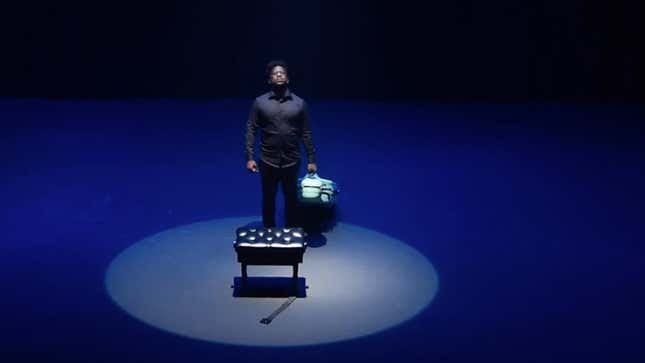
Eddie Adams is a remarkable young man.
A gifted cellist, Adams attends George Mason University in Northern Virginia. Two weeks ago, the Washington Post profiled Adams, contrasting his love for the instrument—and a recent performance at the Kennedy Center—against his “life of poverty and torment.”
Adams’ story won the hearts of readers. Yesterday, the Post reported that the 20-year-old, who just weeks ago had to borrow an instrument to play and textbooks to read because he couldn’t afford them, had received more than $140,000 in donations from readers eager to support him.
Eddie Adams is remarkable—but not because he’s exceptionally gifted, nor because he’s struggled for much of his young life to feel safe, secure, and cared for. He’s remarkable because people actually paid attention.
A function of a racist society is that people of color—in the United States, black people most of all—are often asked to be exceptional to have their luck turn.
And if the recent windfall Adams has received is heartwarming, it’s also uncomfortable given the Post’s framing of his story, which rests on Adams’ exceptionalism in ways that veer into anti-black clichés. The article supports Adams’ own assertion that he is treated differently by other black people—including members of his own family—because he’s deemed not black enough.
By middle school, Adams had moved homes with his mother and five siblings about seven times, including to a homeless shelter in Alexandria. Even when he had a roof over his head, Adams recalls a childhood that felt like one long spell of unsparing punishment, sometimes as the target of family jokes for getting good grades and “acting white,” he said, other times for reasons he never seemed to grasp.
“They make fun of me when I sound intelligent. They make fun of my grammar, the inflection of my voice,” Adams said. His mother, Myra Mason, said his siblings were jealous that Adams did well in school, but she believes her son is spurning his racial identity and family—something Adams denies.
If you think the article would explore this dynamic further—least of all interrogate it—it doesn’t. Instead, the reader learns more about how Adams’ difficulties: wrestling with his bisexual identity, his increased alienation from his family, the tragic shooting death of his brother, and how playing the cello functioned as his therapy through it all.
It’s a beautiful story, and Adams is a sympathetic hero. Video footage of Adams performing is embedded throughout the article, and it’s particularly moving to hear him draw the strings across his instrument—the sound instantly transporting you, much in the way it must have transported Adams afternoon after afternoon, hour after hour.
I believe Adams is completely deserving of the attention he’s received since the Post article was published, glad that through the sympathy of hundreds of readers, he’s received something he hasn’t yet known in his life: the promise of financial security.
But it’s hard to read Adams’ story without thinking of the many more people like him—young people who’ve known hunger and isolation, people for whom survival is a daily endeavor, people with drive and ambition and potential waiting to be fulfilled.
It’s hard not to think about what happens when the instrument isn’t as venerated. What if Adams didn’t play the cello—and all the class implications it carries—and made beats instead? What happens when your venue isn’t the Kennedy Center, but an underfunded community center?
Adams’ profile isn’t the only example of this kind of story. There’s piece after piece about people who walk long distances to work receiving donations, sometimes cars, once their story goes viral. Rather than pressure legislators to improve infrastructure or public transportation so that all of us can have greater access to good, well-compensated jobs, Americans seem content to crowdfund their way out social inequality—medical bills, personal transportation costs, and classroom materials are all frequent targets for donation on crowdfunding sites.
This kind of solution is inadequate, and it’s the context that Adams’ story needs to be set against.
It’s possible to be happy for Adams and simultaneously mourn the many young people like him who never get the sparkling profile piece in a national newspaper. Young people equally bright and worthy of our attention, our well-wishes, our invitations to home-cooked meals, our investment. They are wellsprings of possibility that we’ve rendered invisible because the barriers to their success are so high. They sit in underfunded schools, and in neighborhoods shaped by redlining. They are criminalized in their classrooms, punished at disproportionate rates for the ways they dress and talk. They go to school hungry; if they’re lucky, their school administrators care enough to set up a food pantry where they can get basic groceries. They are pushed out of school. They go broke trying to chase the American Dream. They disappear from sight.
Without a cello in their hand, few notice at all.

